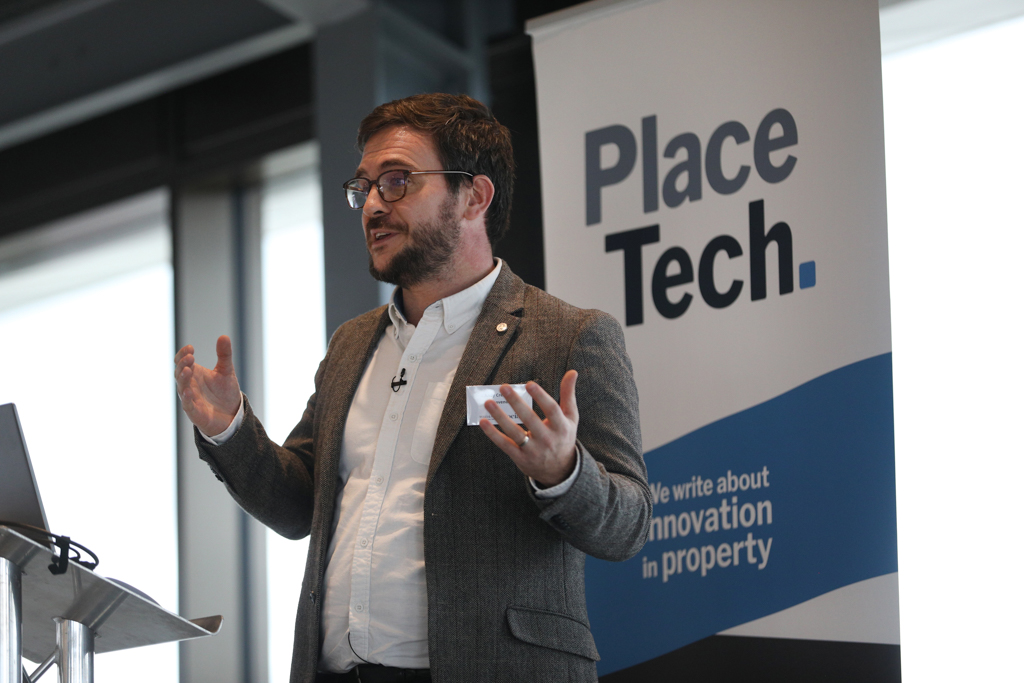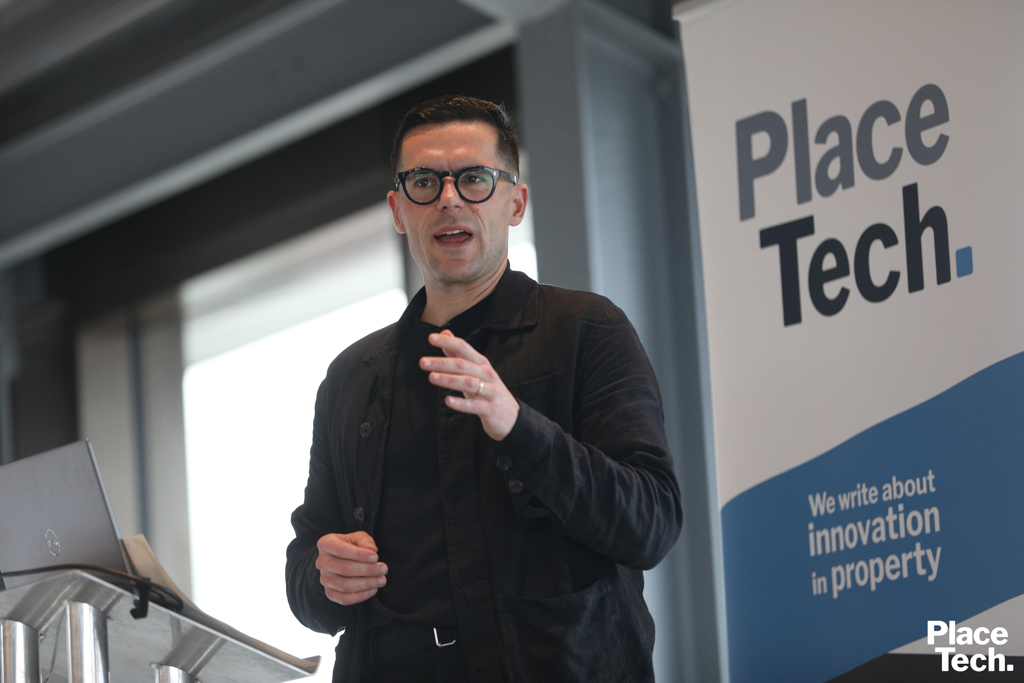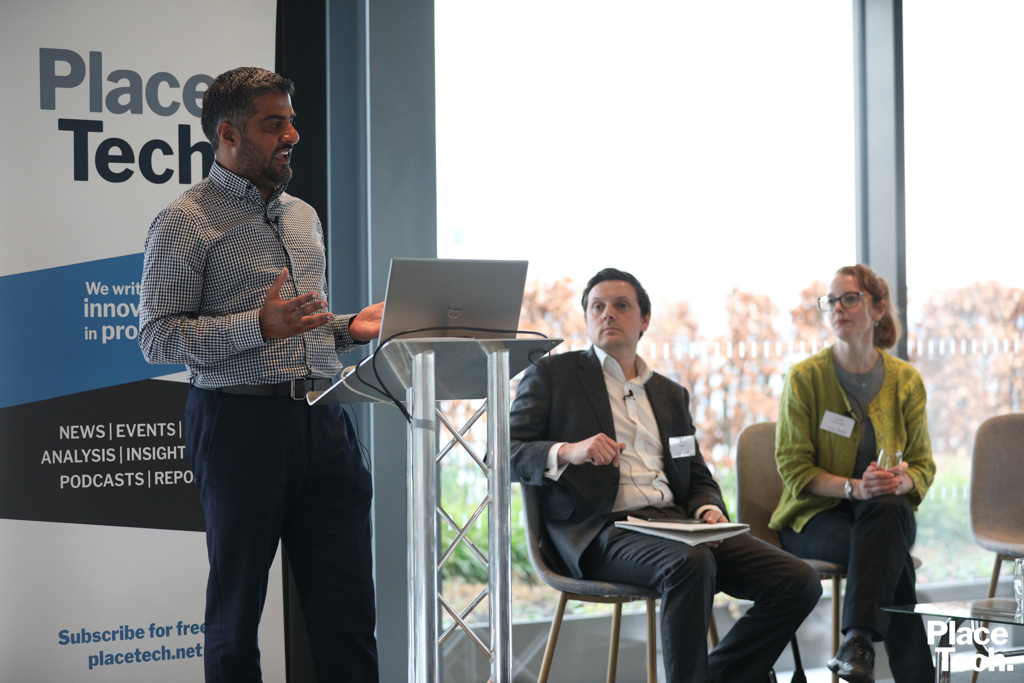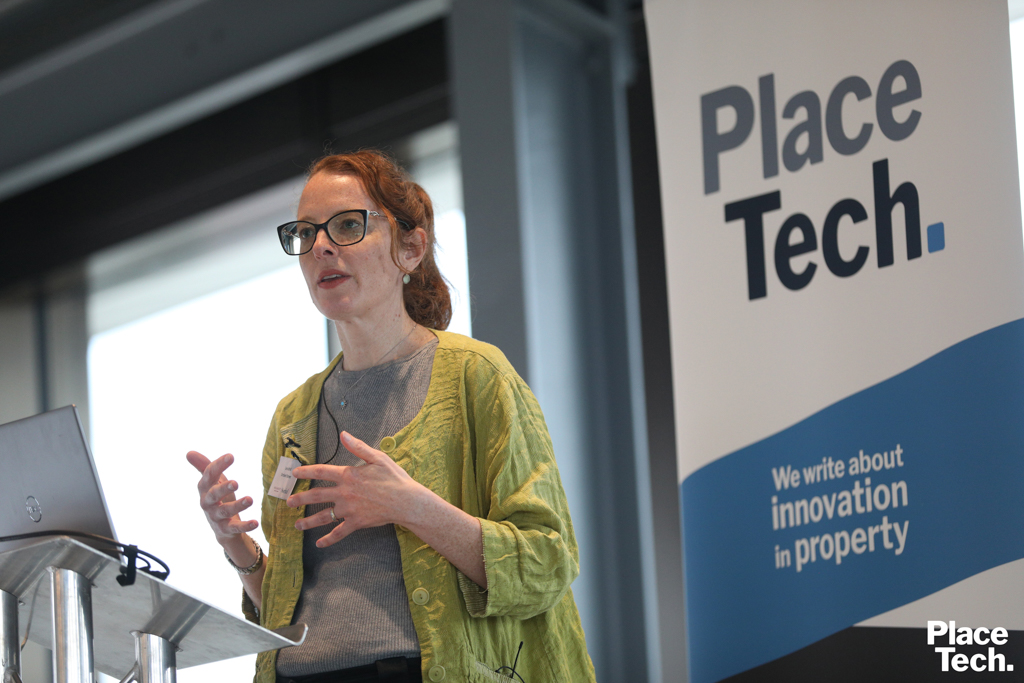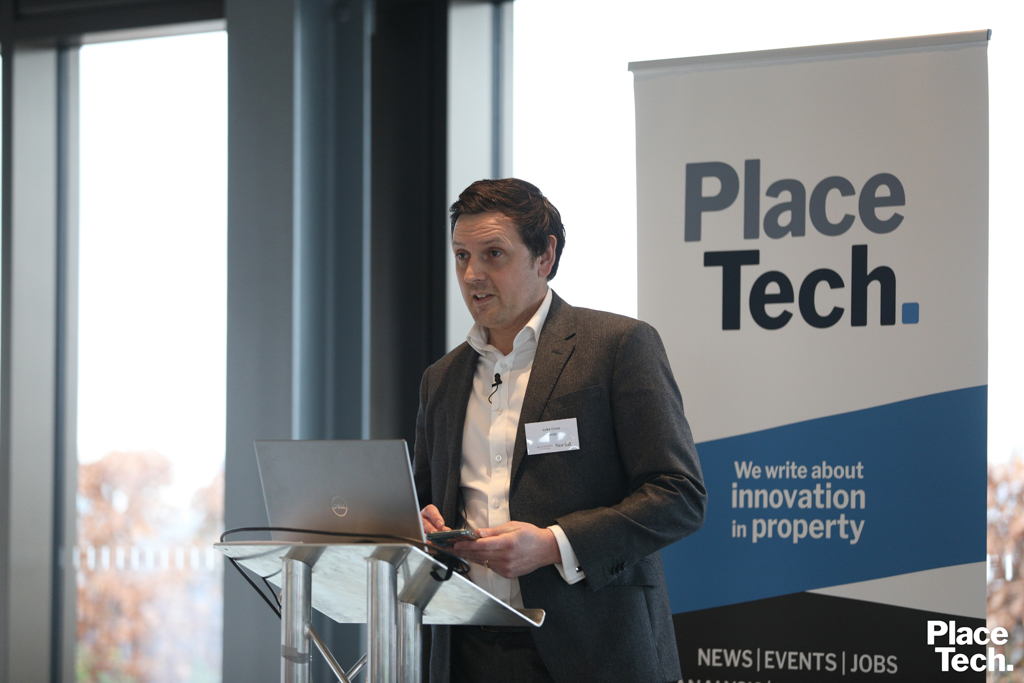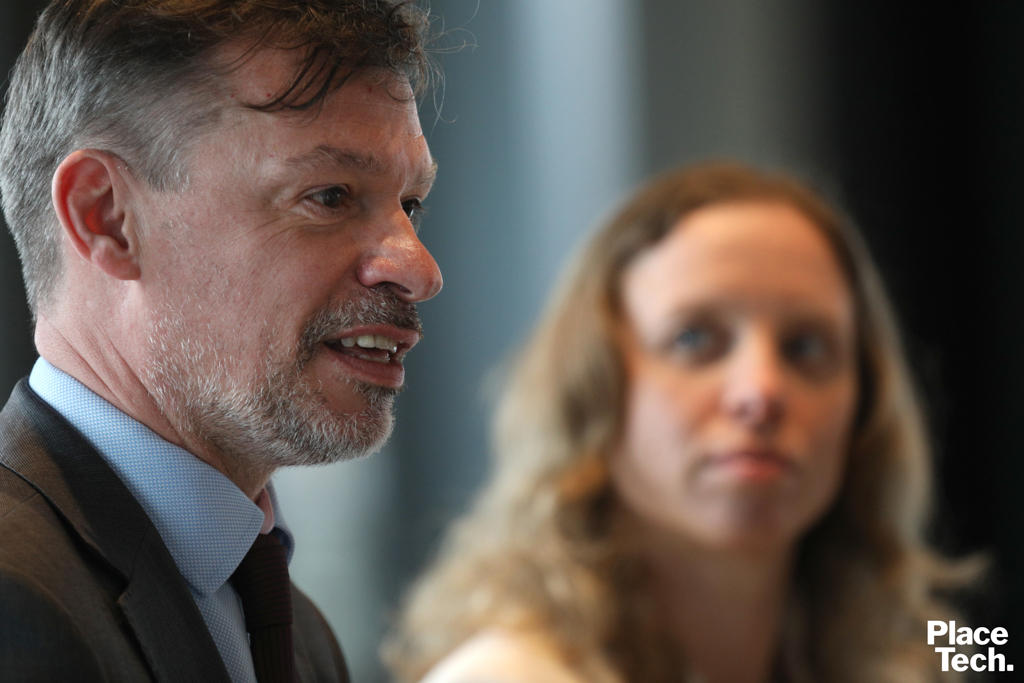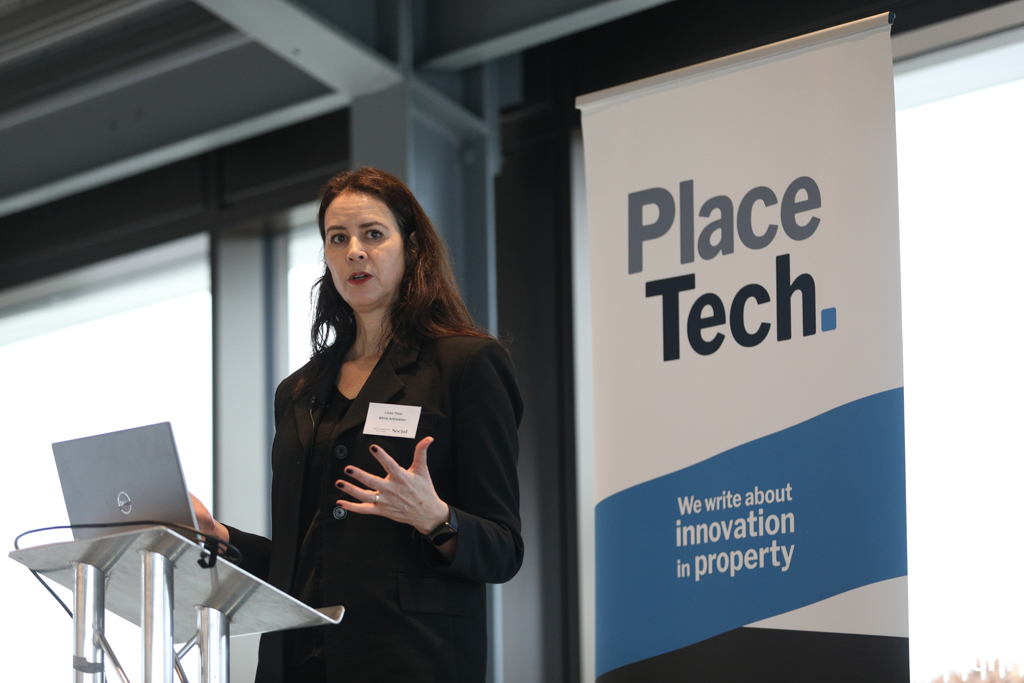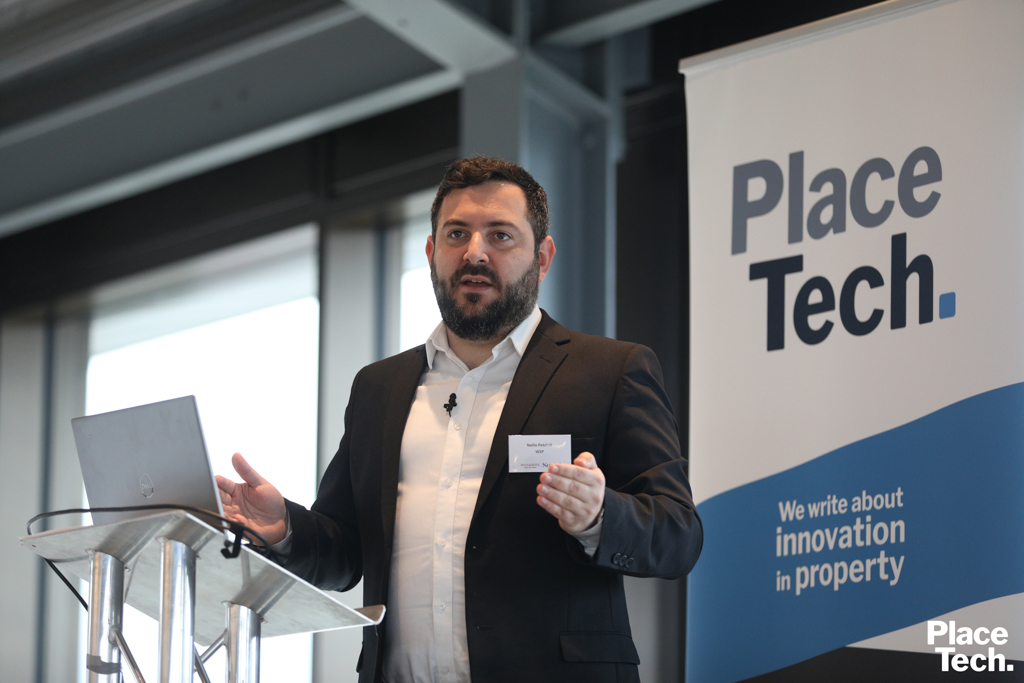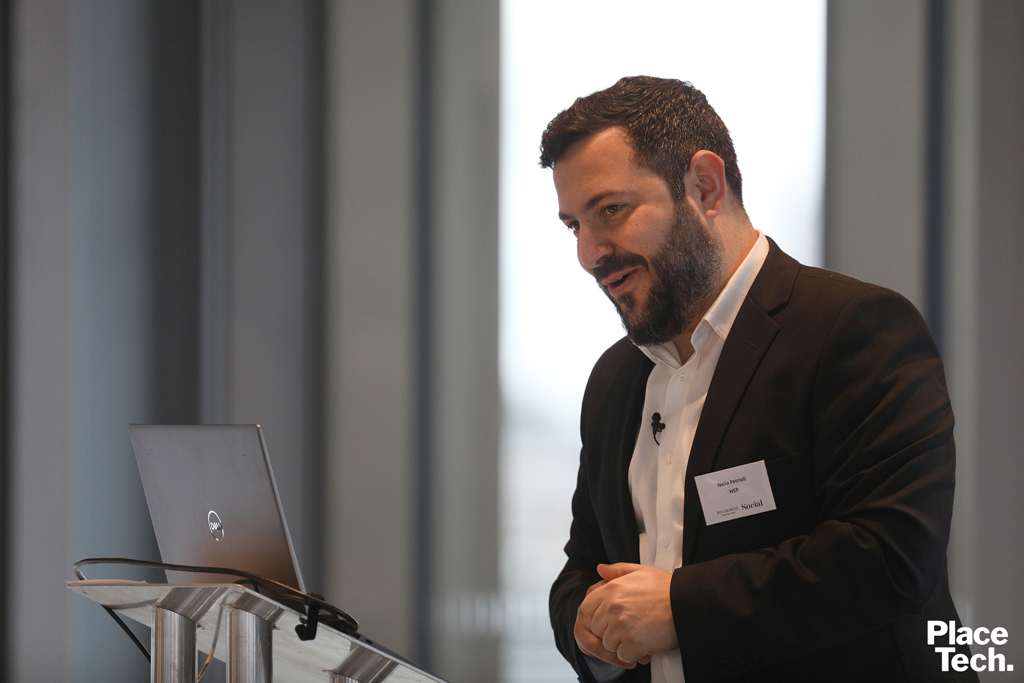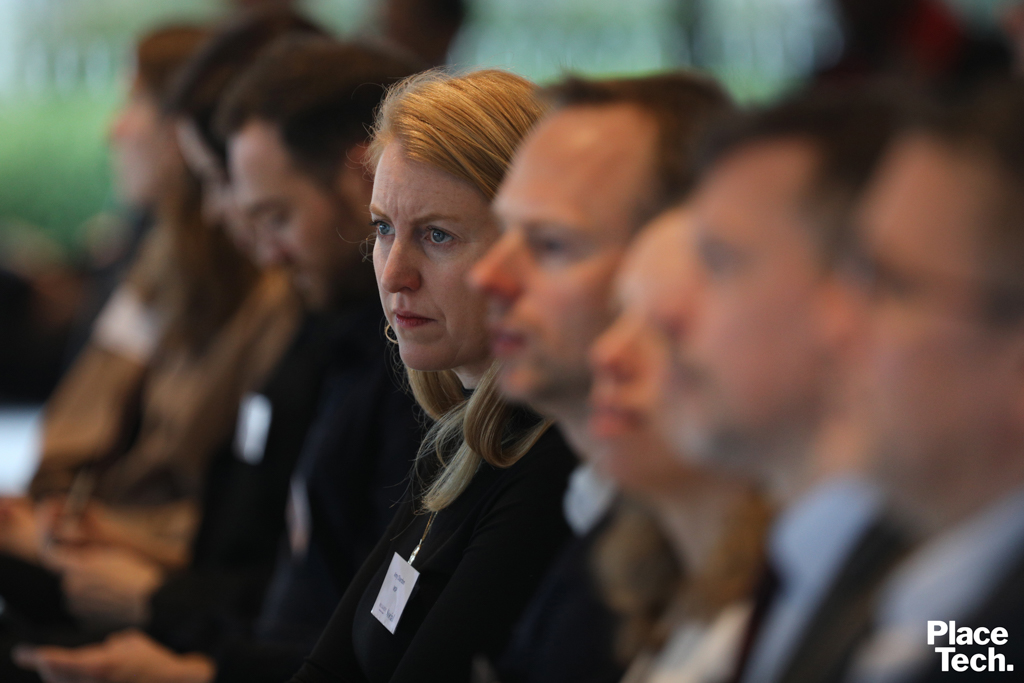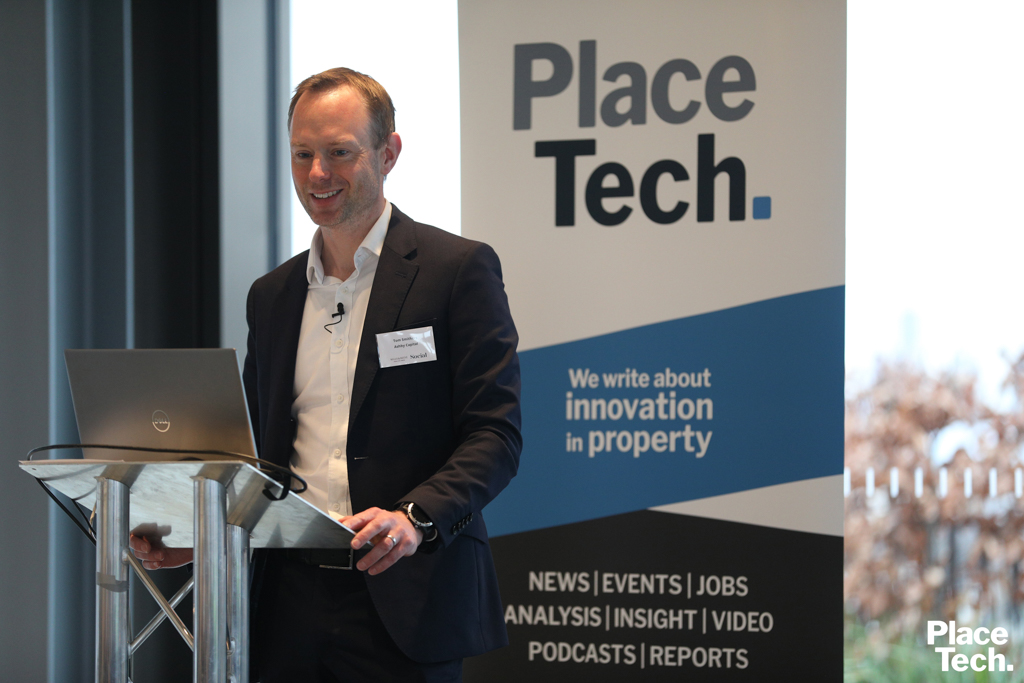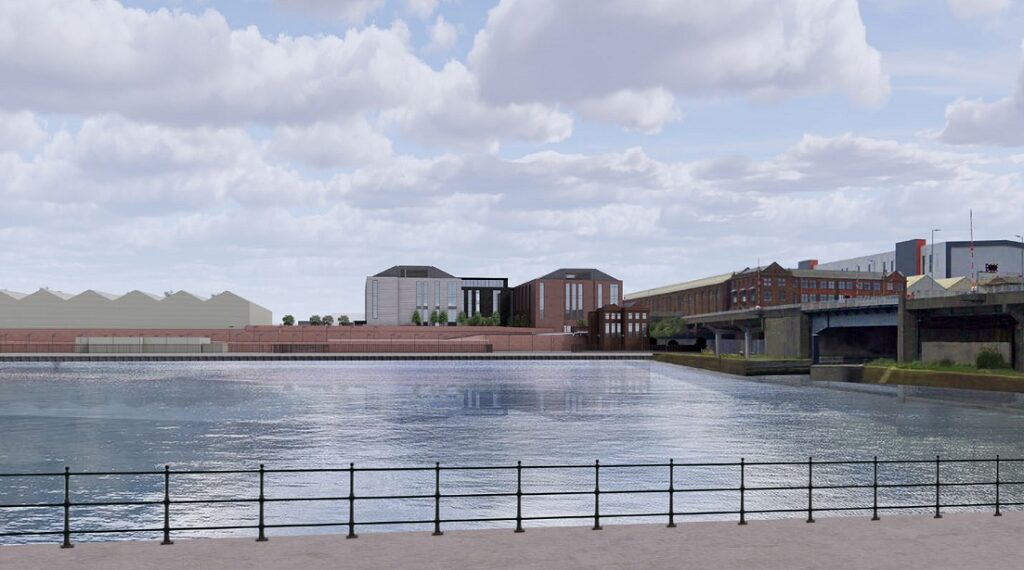ESG RETROFIT PLAYBOOK: Summary and video
Major developers and investors including Ashby Capital, Grosvenor, General Projects, FORE Partnership, Orchard Street and Fidelity, came together to share practical insights into delivering retrofit projects at this PlaceTech event.
List of speakers
- Tom Smithers, property director, Ashby Capital
- Linda Thiel, director and London lead, White Arkitekter
- Nello Petrioli, technical director, WSP
- Laura Ludlow, principal associate, Mills & Reeve
- Ewan Montgomery, portfolio manager, Fidelity International
- Simon Gould, development director, Impact Healthcare REIT
- Luke Cross, director, Social
- Imran Mubeen, director of treasury, Bromford
- Lora Brill, head of ESG, Orchard Street Investment Management
- Basil Demeroutis, managing partner, FORE Partnership
- Ben Cross, development director, General Projects
- Andy Creamer, head of service performance, Grosvenor
Around 100 attendees from across the built environment industry – architects, engineers, asset managers, project managers and more – came to the Kensington Building, an exemplar retrofit office development in a former department store on Kensington High Street in London, for a half-day workshop-style interactive event.
ESG: The Retrofit Playbook was sponsored by communications agency Social and leading law firm Mills & Reeve.
The event was designed to get beyond the usual worthy sentiments issued from so many conference stages about saving the planet to get into the detailed advice and experience needed to know how to do this in reality.
Summary from the day | See gallery below
NO TEXTBOOK | Where the bones of a building are right, retrofitting enables developers to create more sustainable buildings with no need to compromise on the quality of the finished product, according to Tom Smithers, property director at Ashby Capital, who welcomed people to his firm’s Kensington Building. Taking advantage of the impressive floor to ceiling heights in the existing structure, Ashby Capital created an inspiring and sustainable workplace reducing embodied carbon by 30% compared to a typical new-build development. A tired and bleak five-storey 1970s block became a seven-storey mixed-use building with a retail arcade, more attractive public realm and better connectivity to High Street Kensington Underground Station.
LETI HAVE IT | Some 60% of the existing frame remained as original in the Kensington Building, according to engineer Nello Petrioli of WSP, who worked on the transformation. The gross internal area of the building rose by 45%, “a huge increase in area with a relatively low price to pay in terms of structure.” With the help of LETI – London Energy Transformation Initiative –the project team came up with a road to net zero by 2050. About 65% of the total embodied carbon of an office building of this type is structure. From that, WSP extrapolated targets. In 2020, the target would have been 390 kilogram of carbon equivalent per square metre. The Kensington Building actually achieved 220 kgC02e/m2 and is lower than the 2030 target.
DESIGN FOR DISSEMBLY | Currently, we reuse about 3% of existing buildings, explained Linda Thiel, head of the London office of big Scandinavian architecture practice White Arkitekter. The EU target is that we should reuse 70% of buildings. Thiel and her colleagues think that “we should be able to reuse 95% of our building materials, whether it’s in the existing structure, or whether it’s actually taking the components off site and reusing them in another site.” There are new EU standards coming into play, called DFD, which stands for designed for dissembly, or designed for deconstruction. This is also becoming a Swedish ISO standard from next year where designers have to show how every component can be disassembled and reused.
LANDLORD AND TENANT ACTION | Landlords are finding it easier to engage tenants around the subject of making improvements to their buildings for sustainability, according to a panel chaired by Laura Ludlow, principal associate at Mills & Reeve, with guests Ewan Montgomery, portfolio manager at Fidelity International, and Simon Gould, development director at Impact Healthcare REIT. Panelists agreed that over recent years, tenants are much more willing to talk to landlords. In the last six to 12 months tenants who previously ushered landlords out of the door – ‘don’t waste our time, we’re not interested in any improvements’ – are all of a sudden much more willing to talk to landlords. The environment is a much more everyday household subject these days and this is being reflected in business as the same companies that weren’t willing to talk a few years ago are now engaging in ESG ideas.
LARGE DATA VOLUMES | Each year there’s new information that gets requested about environmental performance from investors and others which means that large property owners are constantly revising their systems for capturing it, explained Lora Brill, head of ESG at Orchard Street Investment Management. Brill was talking on a panel about ‘reporting versus reality’ alongside Luke Cross, director of Social, and Imran Mubeen, director of treasury at Bromford, a large housing association in the Midlands with 45,000 homes. Brill explained that Orchard Street employs the services of an external data manager working with property managers to capture and crunch environmental metrics. New surveys and standards are emerging that Orchard Street signs up to, each with lengthy questionnaires. Investors ask for certain data, as do the individual investment rating agents that have their own surveys specific to them. Clients, valuers, auditors are asking for more information in order to comply with recommendations. These requests cause Brill to go back and restructure the portfolio information so the requests can be met going forward at the click of a button rather than with a lengthy manual search each time.
WINDMILL GREENER | After several planning applications, a new-build proposal for an office scheme in Manchester had stalled as unviable, when Basil Demeroutis’s FORE Partnership stepped in and acquired the site. “We came along and we looked at it again and we said ‘actually maybe we were answering the wrong question maybe the question we should be answering is ‘how do we keep the building’ not ‘how do we knock it down’.” The initial new-build proposal would have cost around £600/sq ft to construct and require market-beating rents to be viable. FORE delivered a retrofit and partial new-build that added 60% net lettable area. FORE exited at around £515/sq ft having spent £330/sq ft when it sold the building in mid-2021, having secured lettings at £36/sq ft against an underwritten estimate of £29.50/sq ft in late 2020. In short, it did better through retrofit than it would have done through new-build.
Demeroutis outlined his criteria for buildings that should be retrofitted:
- Vacant or occupied
- ‘A’ locations
- 1980s – 2000s
- Concrete frame, for extra massing
- Poor gross to net area
- At least 50,000 sq ft
IMAGE MAKEOVER | The retrofit brand needs to change. That was the view of General Projects’ Ben Cross in an entertaining presentation. The traditional viewpoint that ‘old is bad, new is good’ is flawed and should be thrown out. ‘Reimagining, rethinking, reinventing, remastering…’ are the ways people should think about retrofitting buildings. Customers want best-in-class ESG buildings, and that is possible if the property industry adopts a reuse-first mindset, not reaching for the demolition ball each time. Some buildings will not be workable for retrofit but this should be in the minority not majority. Agents can help by not replaying the standard script to ouccpiers that insists on maximum floor to ceiling heights and fully glazed offices, Cross argued.
SKILLS GAP | Demand for specialist expertise of how to make heritage buildings more energy efficient is creating a problem of skills shortages, according to Grosvenor’s ESG head Andy Creamer. “We’re very fortunate that our supply chain are incredibly good in terms of heritage portfolios, but they are also turning around to us at the moment and saying ‘the skills in the market are very challenging to recruit for’. It’s becoming more difficult because the demand is growing. So there’s a big piece of work that we’re also doing and we are presenting a paper to Parliament on 7 March about addressing the skills gap and retrofitting, which is incredibly important. One in five buildings across the UK was built before 1919. There’s a significant proportion of properties across the UK that fall into this category. Government legislation needs to fall in line with that, Creamer argued.
Click image to launch gallery








